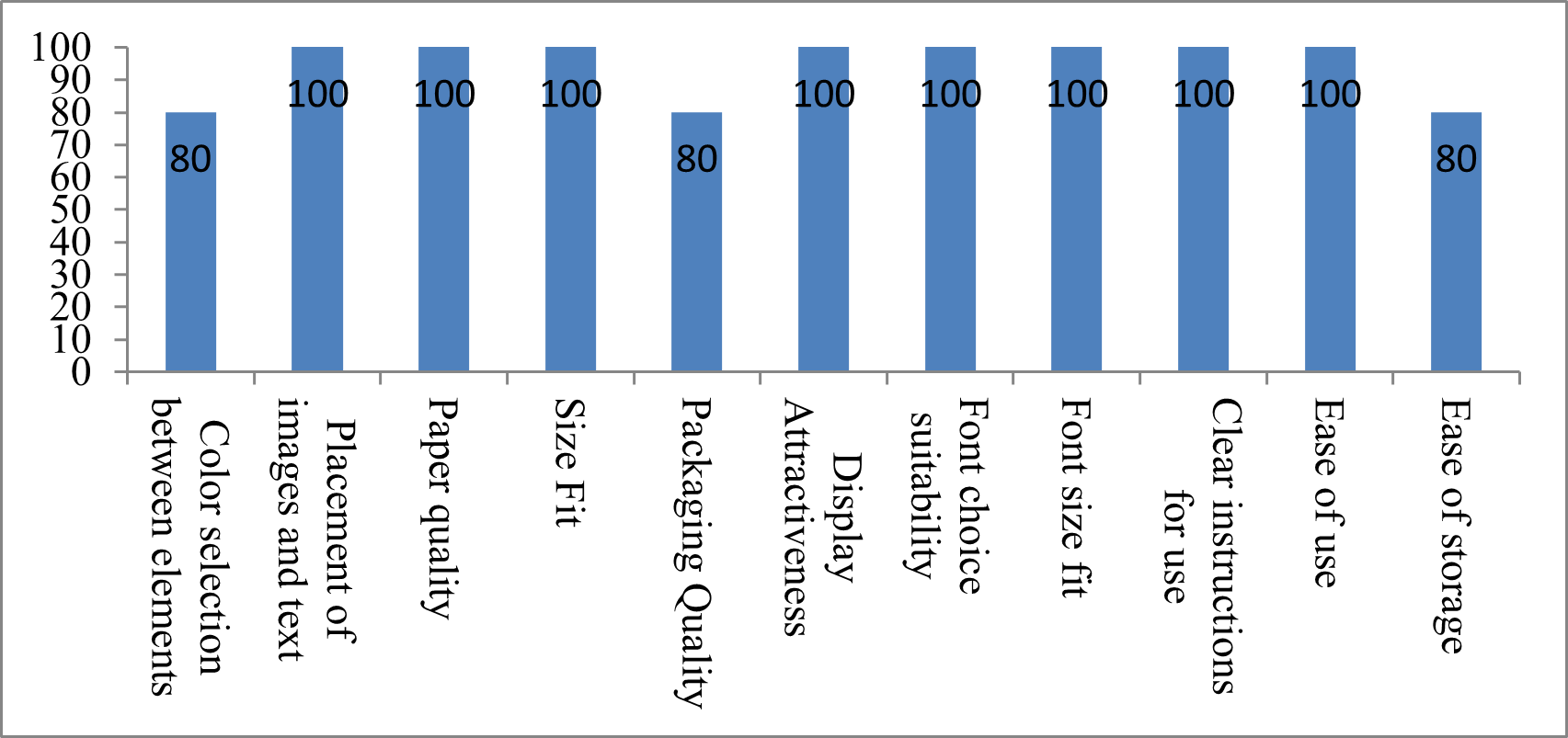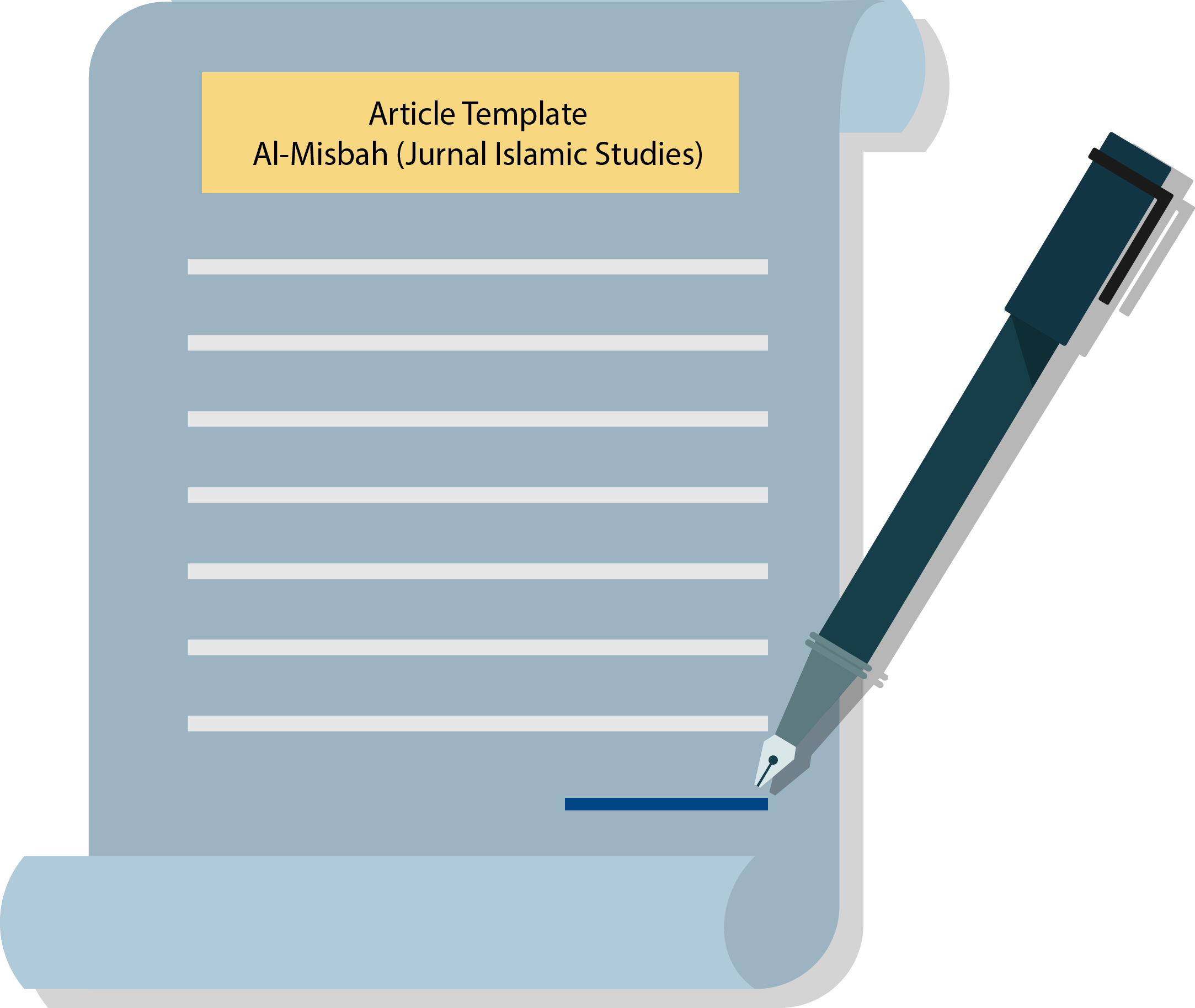Tikrar al-Muhyi: Development of a Pocketbook for Memorizers of the Qur'an
DOI:
https://doi.org/10.26555/almisbah.v10i2.6328Keywords:
Tikrar al-Muhyi, Pocketbook, Murajaah, al-Quran, Islamic educationAbstract
Memorizing the Quran preserves its authenticity. During al-Qur'an memorization, a hafizh may face obstacles that make it difficult to memorize the verses. Forgetting memorized verses when adding new ones, many similar verses, lack of focus due to environmental factors, changing al-Qur'an manuscripts, and rarely reading verses to be memorized are obstacles in murojaah. This research aims to develop learning media in the form of pocketbook Tikrar al-Muhyi as an easy solution to murajaah al-Qur'an. This research uses the R&D method, which adopts the development of Borg & Gall. Subjects in this study were students of the University of Darussalam Gontor. Data Collection using questionnaires given to subject material experts, media experts, and students to test the feasibility of the media learning pocketbook. The research findings show that the development of this book is very feasible, with a percentage of 80% based on media and material experts. Furthermore, the eligibility increase was 94% after the second stage test. This research has contributed to Islamic education, especially about media that makes it easier to memorize the al-Qur'an.
References
Ahmad Sabri. (2020). Trends of “Tahfidz House” Program in Early Childhood Education. JPUD - Jurnal Pendidikan Usia Dini, 14(1), 71–86. https://doi.org/10.21009/JPUD.141.06
Anwar, K. (2018). Implementai Metode ODOA (One Day One Ayat) Dalam Meningkatkan Kemampuan Menghafal Al-Quran. JPII, Vol.2.
Ardian Asyhari, Helda Silvia, “. (2016). Pengembangan Media Pembelajaran Berupa Biletin dalam Bentuk Buku Saku untuk Pembelajaran Ipa Terpadu. Jurnal Ilmiah Pendidikan Fisika „Al-Birruni‟, 5.
Basyit, A. (2019). Pengembangan Manajemen Rumah Tahfidz Alqur’an di Indonesia. Tadarus Tarbawy.
Bengkul Tahfidz, R., & Muhammadiyah, U. (2020). Metode Dakwah Rumah Tahfidz Nurul Fikri Kota Bengkulu Dalam Meningkatkan Hafalan Al- Qur ’ an. JOISCOM (Journal of Islamic Communications)COM.
Hakim, F., & Dyah Permatasari, Y. (2020). Tren: Pendidikan Tahfidz Qur’an Pada Anak Di Rumah Qur’an Ar-Roudhoh Rowotengah. Auladuna : Jurnal Prodi Pendidikan Guru Madrasah Ibtidaiyah, 2(2), 19–26. https://doi.org/10.36835/au.v2i2.375
Hidayah, N. (2016). Strategi Pembelajaran Tahfidz Al-Qur’an di Lembaga Pendidikan. Ta’allum: Jurnal Pendidikan Islam, 4(1). https://doi.org/10.21274/taalum.2016.4.1.63-81
Junaidi, M. (2006). menghafal al-Quran itu mudah. CV Angkasa Solo.
Kaltsum, L. U., Suparta, M., Thohari, F., & Sirin, K. (2021). Model Pembelajaran Tahfidz Al-Qur’an di Indonesia, Iran, Turki, dan Arab Saudi. An-Nuha : Jurnal Kajian Islam, Pendidikan, Budaya Dan Sosial, 8(2), 347–373. https://doi.org/10.36835/annuha.v8i2.458
Khaerudin, D. (2021). Khaerudin, dkk, Analisis Kebutuhan Pengembangan Media Murojaah Al-Quran bagi Siwa SD, Vol. 1, No. 8 Agustus 2021. 1(e-ISSN:2798-9895).
Lubis, A. M., & Ismet, S. (2019). Metode Menghafal Alquran Pada Anak Usia Dini di Tahfidz Center Darul Hufadz kota Padang. Aulad : Journal on Early Childhood. https://doi.org/10.31004/aulad.v2i2.30
M. Syahrul Syarifuddin, S. . (2020). Panduan Universitas Darualam Gontor. UNIDA Gontor press.
Mughni, A. R. A., Suhardini, A. D., & Afrianti, N. (2022). the Analisis Manajemen Program Kafana di Rumah Tahfidz Khoiru Ummah. Bandung Conference Series: Islamic Education. https://doi.org/10.29313/bcsied.v2i1.2411
Setyosari, P. (2016). Metode Penelitian Pendidikan dan Pengembangan. Prenamedia Group.
Solihin, R. (2020). Media Pembelajaran Interaktif Tahfidz Al-Quran Di Sekolah Dasar. Asy-Syukriyyah, 21.
Sugiyono. (2019). Metode Penelitian Kuantitatif, Kualitatif, dan R&D. Alfabeta.
Wahid, wiwi alawiyah. (2013). Cara Cepat Bisa Menghafal Al-Quran. diva press.

Downloads
Published
How to Cite
Issue
Section
License
Copyright (c) 2022 Niken Sylvia Puspitasari Sukendar, Ahmad Fadly Rahman Akbar , Alivia Bunga Cahyani

This work is licensed under a Creative Commons Attribution-ShareAlike 4.0 International License.
Authors who publish with Al-Misbah agree to the following terms:
- Authors retain copyright and grant the journal right of first publication with the work simultaneously licensed under a Creative Commons Attribution License (CC BY-SA 4.0) that allows others to share the work with an acknowledgment of the work's authorship and initial publication in this journal.
- Authors are able to enter into separate, additional contractual arrangements for the non-exclusive distribution of the journal's published version of the work (e.g., post it to an institutional repository or publish it in a book), with an acknowledgment of its initial publication in this journal.
- Authors are permitted and encouraged to post their work online (e.g., in institutional repositories or on their website) prior to and during the submission process, as it can lead to productive exchanges, as well as earlier and greater citation of published work.

This work is licensed under a Creative Commons Attribution-ShareAlike 4.0 International License.



